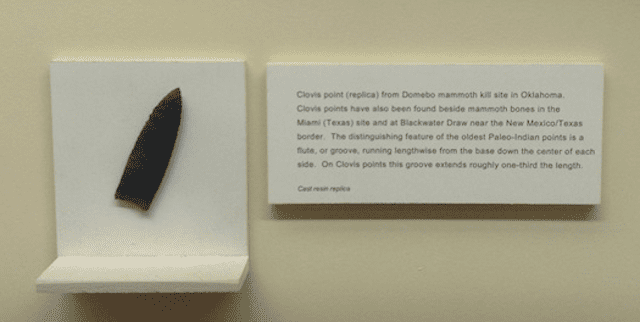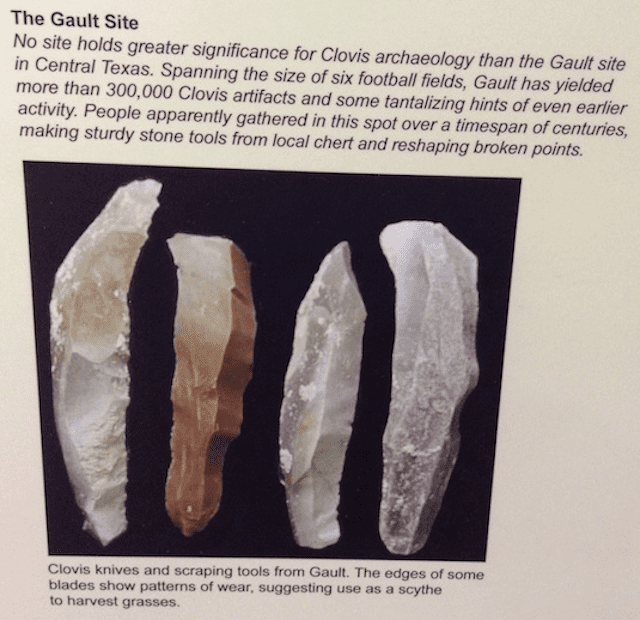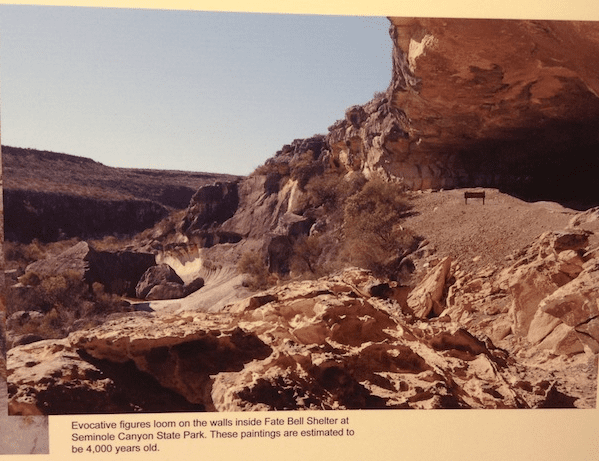
Bowie was a “tall, raw-boned man with deep-set eyes, fair hair, and an open and frank disposition.” Convivial and generous, he was a man, it was said, who loved music. That Bowie was James, not David.
Born in 1796, Jim Bowie was a speculator, a soldier, and an adventurer who worked smuggling slaves with his brothers. Bowie was ambitious and scheming. He gambled at cards and knew how to fight. His weapon of choice, a very large hunting knife, secured him a reputation as the South’s most formidable knife fighter. He famously disemboweled one opponent in a brutal fight. Noah Smithwick, who was with him at the Battle of Concepción, called him “a born leader.” He eventually made his way to Texas and, like other legendary figures, died in 1836 defending the Alamo.

Even if Jim Bowie could have known that his name would live on, associated with the long blade he favored, he could never have imagined that his name would be adopted nearly two centuries later by a luminary of pop music—David Bowie. David took the frontiersman’s surname as his own and sought to create, as he told Terry Gross in a 2002 interview, “the 21st century in 1971.”
While David Bowie never killed anyone, he did subtitle his concept album, “Outside: the Ritual Art-Murder of Baby Grace Blue: A non-linear Gothic Drama Hyper-Cycle.” As the album title reveals, the two Bowies’ sensibilities and histories could not have been more different. Yet, the two men share much. Both were pioneers, fighters, adventurous, collaborated with their equally famous peers, and were political. Both Bowies are still controversial. And both were adept with the Bowie knife.

David Bowie was born David Robert Jones. He played with several name changes, in part to avoid association with Davy Jones of The Monkeys. In 1966, he settled on Bowie. As he explained to Rolling Stone, the name came from the Bowie knife. “I was into a kind of heavy philosophy thing when I was 16 years old, and I wanted a truism about cutting through the lies and all that.” In any case, to Bowie—David—the Bowie was “The ultimate American knife. It is the medium for a conglomerate of statements and illusions.”
In considering the connection between Jim Bowie and David Bowie, we might reflect on how legends are made, die, and reborn. James’ out-sized life was commemorated in books, movies, and action figures, along with Davy Crockett and Col. William Travis, as the lore surrounding the Alamo grew to epic status. Jim Bowie was transformed into a cultural icon, a symbol of the gritty determination of the American spirit. He lives on now as a hero to those who wish to restore an older, whiter version of Texas’ past. David Bowie, master of alter egos, couldn’t have picked a more ironic choice for a namesake.
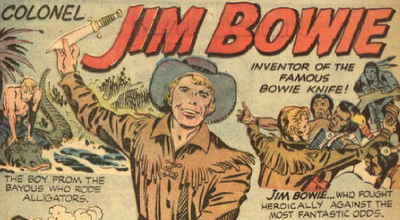
By appropriating the name Bowie, he did what he set out to do. A bold adventurer, he slashed through cultural norms. He repeatedly created new identities and genres. He startled popular culture with his public declaration as gay in 1972 and, a few years later, as bi-sexual. His choices and changes in music were equally daring. He embraced hybridization and androgyny. He mixed genres and did so self-consciously. David Bowie made his own legend, lived up to it, and then he remade it—numerous times over: Ziggy Stardust, the man who fell to earth, the sexual adventurer, glam rocker, fashion icon, Off-Broadway lyricist. He saw rock – and life — as theatre. In so doing, he showed those of us who grew up with his music how to be the hero of our own stories.
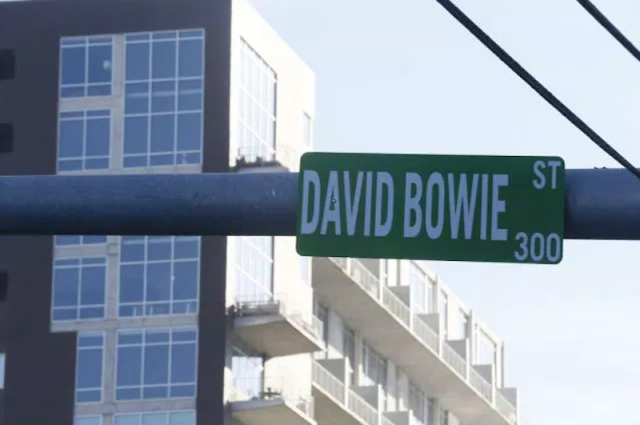
Perhaps, then, we’ve reached the logical end to an age of heroic action. After all, if each of us has become our own hero, how can we hope to become more than we already are? David Bowie’s life suggests that we might reach beyond our own imagination. Although he apparently had a fascination with American culture, there’s no indication that he particularly looked for meaning in the life of James Bowie and the heroes of the epic Battle of the Alamo. David Bowie instead chose the knife as his talisman — Jim Bowie’s frontier weapon — and remade it into a cultural weapon. As it turns out, it is a dramatically effective one.
The views and opinions expressed in this article or video are those of the individual author(s) or presenter(s) and do not necessarily reflect the policy or views of the editors at Not Even Past, the UT Department of History, the University of Texas at Austin, or the UT System Board of Regents. Not Even Past is an online public history magazine rather than a peer-reviewed academic journal. While we make efforts to ensure that factual information in articles was obtained from reliable sources, Not Even Past is not responsible for any errors or omissions.
